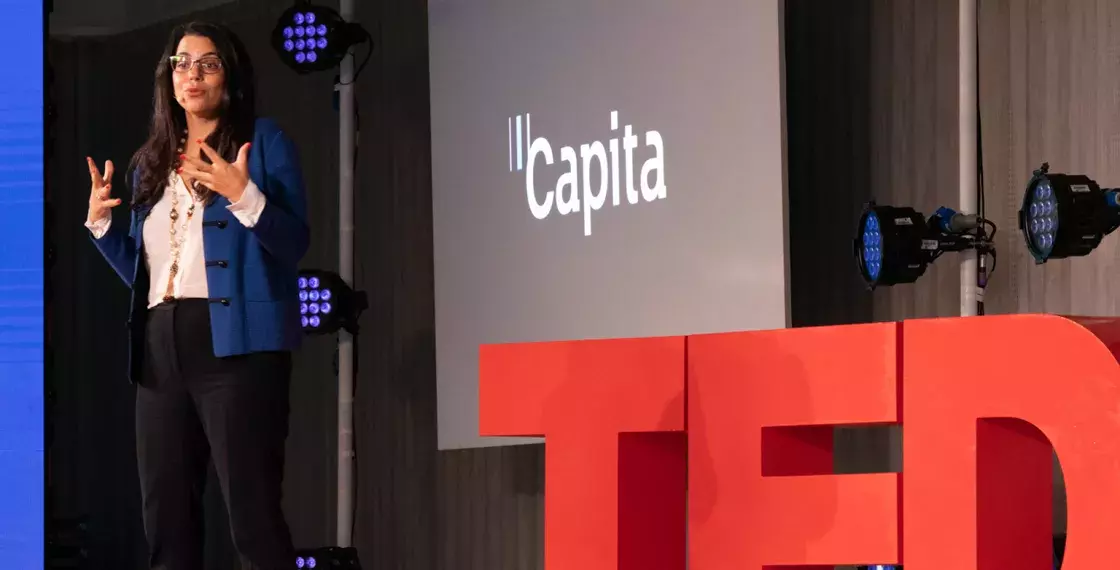Inspired by Jeff Kirschner’s TED talk around data solving social problems, we asked a range of Capita experts for their views on what other issues data has the power to transform.
Here Matt Stagg, Director of Product and Innovation at Barrachd, part of Capita, discusses how data gives us the ‘information advantage’.
What is the information advantage? It’s the ability to access and use data to make evidence-based decisions in real time and gain an advantage in your market or your space. For a police force, that could be accurately predicting that something is going to happen before it does – for a business, it could be an investment opportunity.
It’s somewhere where organisations are currently falling short – with a recent government report outlining the unrealised potential of using data as an asset. But according to Matt, the future will see perpetual data evaluation. Rather than us just tapping into data on an ad hoc basis to solve individual problems, this perpetual analysis will be always-on and draw on a broad range of complementary data sources. The result? The ability to get an immediate, 360-degree view of an individual, event or entity – with consent – and then explore this data landscape in detail. Combining open, isolated and operational data will enable us to investigate three dimensions of any problem.
There’s huge potential for disruption when it comes to non-curated data – especially in the roles of what we call ‘digital witnesses’. Imagine a long-distance HGV driver is travelling through a remote part of the United States, along a desolate stretch of road with very little traffic. Alongside that is an important oil pipeline. As they are driving, they notice a leak. They take a photo of the gushing oil that’s spraying onto the road and publicly post it to their social media account.
For the oil company that is piping oil downstream, that one photo contains commercially valuable information. It might be the only information source that flags that there is a leak in the pipeline, and where – roughly – that leak is on the line. The ability to plug that leak quickly might save tens of thousands of dollars of lost oil revenue.
But you need a system to identify, harvest and flag the information contained in that one photograph, and you need intelligent systems to connect those insights to operational decision-makers so action can be taken. In the future Matt believes we’ll see the emergence of ‘shadow’ technicians, who track the day to day functions of people and teams – like a trading desk in an investment bank – and apply their technical data analytics expertise to augment the processes and decision-making of operational teams. This will lead to a new breed of ‘builders’ who identify and solve problems that had never been addressed before, based on data.
The potential to go beyond immediately available, curated, commoditised data can be brought to bear in other scenarios. Dragonfly AI, a new innovation in predictive visual analytics technology, has been developed to understand what the human brain sees first in a range of contexts – to such an extent that it has been given an 89% accuracy rating on the MIT Saliency Benchmark. Knowing objectively how design decisions influence audience attention can help content developers plan how to lay out an e-commerce site to optimise sales, or help architects and planners understand how we will respond to and navigate our physical environment, in non-subjective ways. Rather than relying on what we already know, innovations like Dragonfly AI can help us go beyond the available data to carve out an information advantage in new ways.
That’s why the information advantage will bring real world changes – problems solved faster; public spend reduced, and efficiency through every process. By having a richer picture of an individual through data, we’ll have better information and be able to deliver better service – whether that’s in an office or a hospital.
Data can be hugely powerful – but this also comes with challenges. How do you ensure data is accurate, with low levels of pollution and a reduced risk around fake news? And how can we leverage technology to identify indicators of these issues?
Within Capita we’re taking steps to create a data consultancy, bringing together data science, business analytics, data engineering and project management. By trying to convert theory into operational outcomes, we’ll be able to turn ideas into reality.







